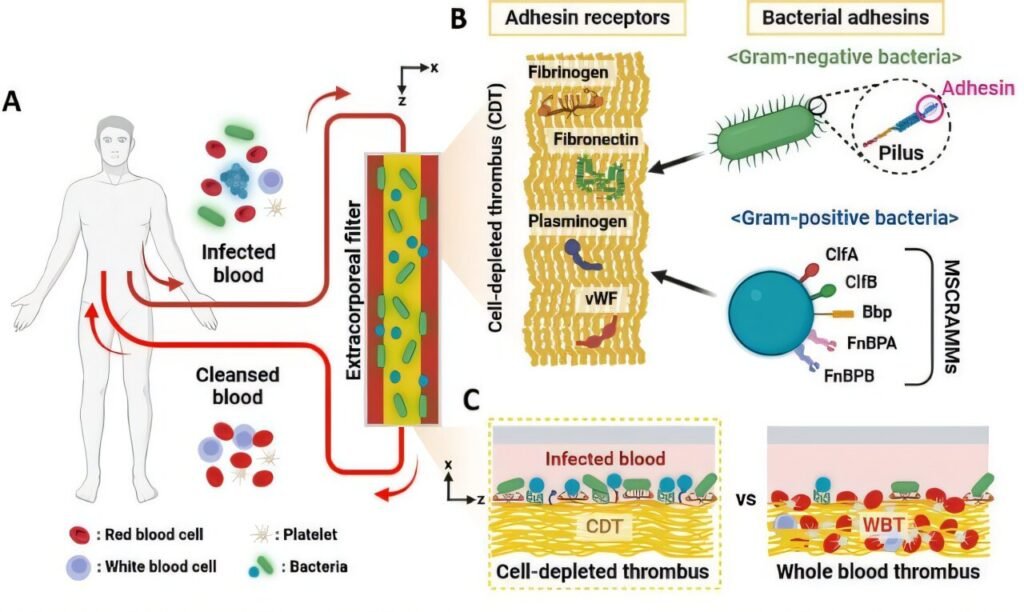A groundbreaking extracorporeal blood purification technology has been developed by a research team at UNIST, offering a promising solution for combating deadly systemic infections, including sepsis caused by antibiotic-resistant bacteria. This innovative technique relies on artificial blood clots to capture and remove bacteria from the bloodstream, paving the way for new treatment options. The findings of this study have been published in the prestigious journal Advanced Science.
Led by Professor Joo H. Kang from the Department of Biomedical Engineering at UNIST, the research team introduced an extracorporeal bacterial purification device that utilizes artificial thrombi to effectively cleanse infected blood. Similar to the concept of dialysis, this technique involves extracting blood from the patient, capturing bacteria on the surface of artificial clots, and then returning the purified blood back into the body.
The newly developed extracorporeal blood purification device, known as eCDTF, features a unique spiral structure embedded with artificial blood clots. These artificial thrombi, composed solely of plasma proteins, attract and trap bacteria flowing through the device. The eCDTF demonstrated an impressive ability to remove over 90% of major pathogenic bacteria species, including antibiotic-resistant strains, proving its efficacy in preclinical experiments.
In tests conducted on rats infected with methicillin-resistant Staphylococcus aureus (MRSA), the eCDTF significantly reduced blood bacterial counts and inflammatory markers within just three hours of extracorporeal circulation. Furthermore, the survival rate of rats treated with the device was significantly higher compared to untreated control rats, highlighting the potential of this technology in combating systemic infections.
The development of this novel blood purification technology was based on a deep understanding of blood flow dynamics. By leveraging the phenomenon of bacterial margination, where bacteria are directed and captured due to their small and rigid nature, the device was optimized to maximize bacterial removal. This innovative approach offers a non-antibiotic solution to bloodstream infections, such as sepsis, which can lead to severe complications if left untreated.
Professor Kang emphasized the transformative potential of this technology in the early intervention and effective treatment of bloodstream infections. By directly targeting a wide range of pathogenic bacteria, the eCDTF presents a promising new approach to combat bacteremia and sepsis, offering hope for patients at risk of severe infections.
In conclusion, the development of this extracorporeal blood purification device marks a significant advancement in the field of infection control. The innovative use of artificial blood clots to capture and remove bacteria from the bloodstream opens up new possibilities for the treatment of deadly systemic infections, providing a ray of hope for patients battling antibiotic-resistant bacteria and sepsis.


